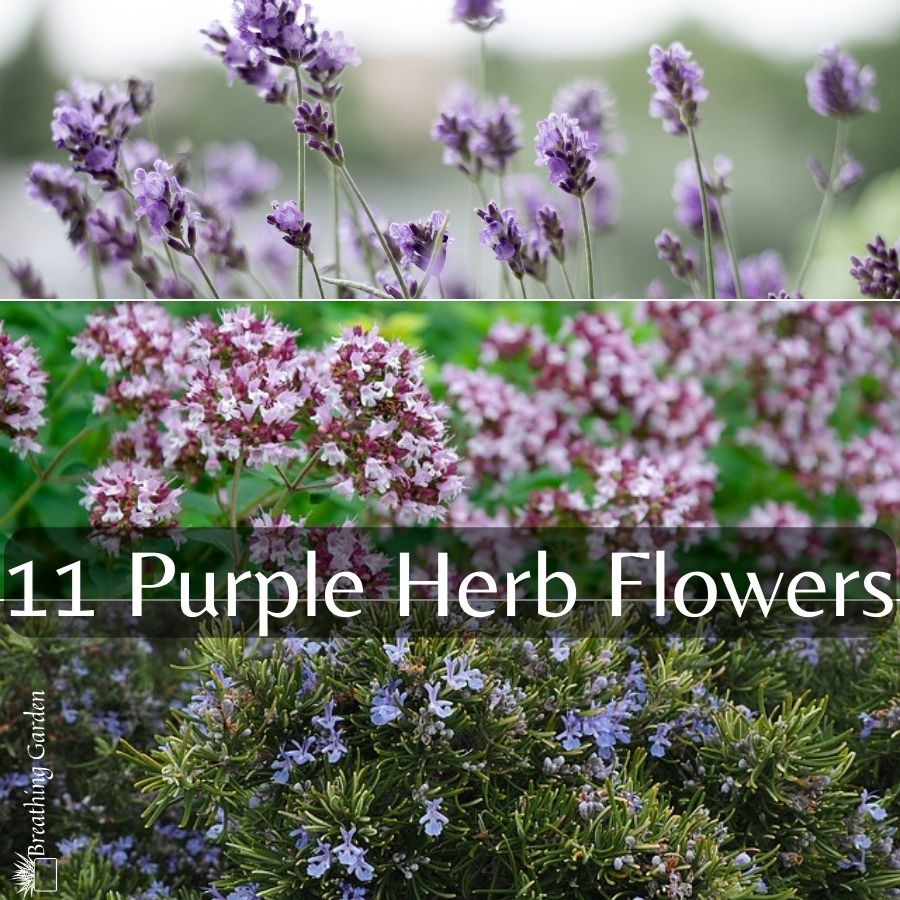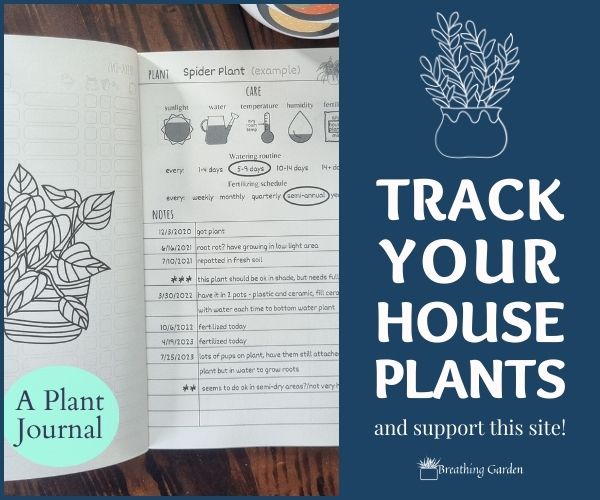There are a number of herbs that have beautiful purple flowers. If you’re looking to add some color to your garden, these purple herb flowers are a great choice! Not only do they look nice, but they also have a variety of uses.
*This post may include affiliate links. When you purchase items from these links, we will receive a small commission, at no extra cost to you, to help support this website. Thank you for your support! Read more ->
In this post, we will discuss 11 different herbs with purple flowers and how to care for them. We’ll also provide information on when the herbs can be used. So if you’re interested in adding some purple herbs to your garden, keep reading!
What’s best about these herbs is that almost all of them can either be grown inside or outside, making them an option to keep alive year round.
11 Purple Herb Flowers
Lavender
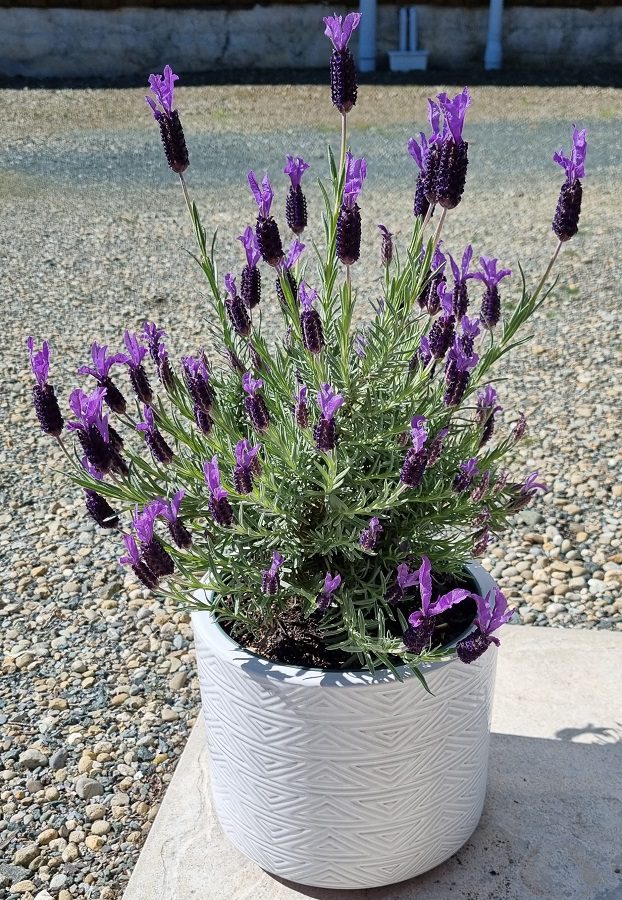
Lavender is a popular choice for those looking to add some color to their garden. This is also likely the herb that pops into head first when thinking about herbs with purple flowers.
Lavender is also a versatile purple herb flower that can be used in a number of different ways. You can use the leaves in cooking or make lavender tea. The flowers can also be used to make lavender oil or potpourri.
To care for lavender, it is best to plant it in well-drained soil. Lavender prefers full sun but can also tolerate partial shade. Water the plant regularly and fertilize it every few weeks during the growing season. When the flowers start to fade, you can cut them back to encourage new growth.
Rosemary
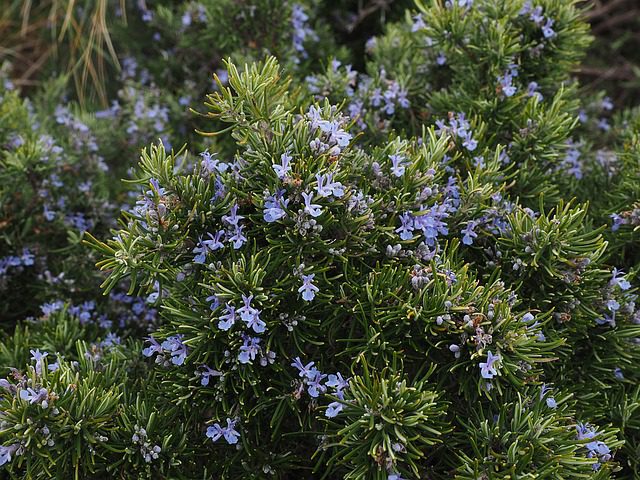
Rosemary is another herb that is known for its purple flowers. The flowers of this herb are actually quite small, but they are very pretty nonetheless. Rosemary is a fragrant herb that is often used in cooking. It can be used to flavor meats, vegetables, and even desserts!
When growing rosemary, it is important to choose a sunny spot in your garden. The soil should be well-drained and you should water the plant regularly. Fertilize rosemary every few weeks during the growing season. You can harvest the leaves at any time, but they will be most fragrant just before the flowers bloom.
Sage
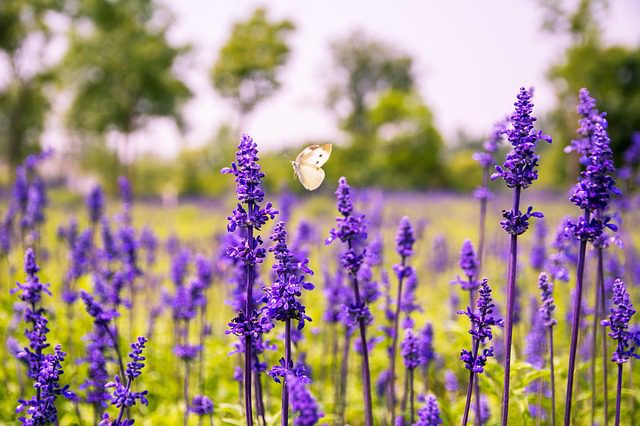
Sage is another purple herb flower. The flowers of this herb grow on a long stem, and are very stunning to look at. It can be used to flavor meats, vegetables, and even desserts! (Or to make a sage cleansing stick!)
When growing sage, it is important to choose a sunny spot in your garden. The soil should be well-drained and you should water the plant regularly. Fertilize sage every few weeks during the growing season.
Chives

Chives are a member of the onion family and they have pretty purple flowers that bloom in late spring. The flowers of this herb are edible and they make a beautiful garnish for salads or other dishes. Chives also have a mild onion flavor that can be used in cooking.
This herb is very easy to care for. It prefers full sun but can also tolerate partial shade. The soil should be well-drained and you can water the plant regularly. Chives don’t need to be fertilized, but you can do so every few weeks if you like. Harvest the leaves when they are about six inches long.
Oregano
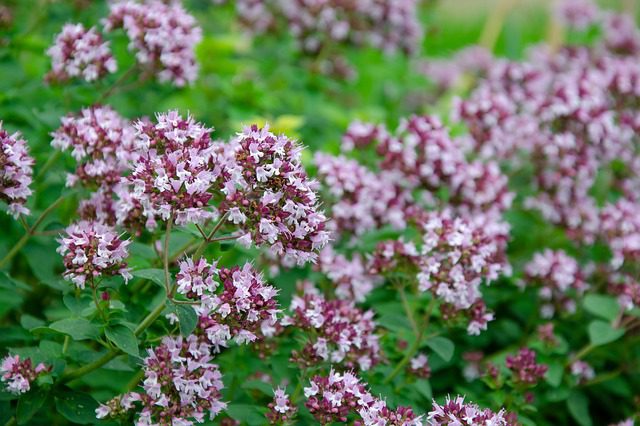
Oregano is a fragrant herb that is known for its purple flowers. This herb is often used in cooking, as it has a strong flavor. Oregano can be used to flavor meats, vegetables, and especially great for pizza!
When growing oregano, choose a sunny spot in your garden. The soil should be well-drained and you should water the plant regularly. Fertilize oregano every few weeks during the growing season.
Mint

Mint is a fragrant herb that often has purple flowers. This herb is often used in cooking, as it has a strong flavor. Make tea out of your mint, use it to flavor desserts, or other recipes.
When growing mint, choose a sunny spot in your garden. The soil should be well-drained and you should water the plant regularly. Mint is a thirsty plant, so keep that in mind when deciding where to grow it. You also want to grow it in a container or else it will spread everywhere.
Creeping Thyme

Creeping thyme is a low-growing herb that has beautiful purple flowers. This herb is often used as a ground cover or in rock gardens. It can also be used in cooking, as it has a mild flavor.
This herb is very easy to care for. It prefers full sun but can also tolerate partial shade. The soil should be well-drained and you can water the plant regularly. Creeping thyme doesn’t need to be fertilized, but you can do so every few weeks if you like. Harvest the leaves whenever you need thyme in a recipe.
Anise Hyssop
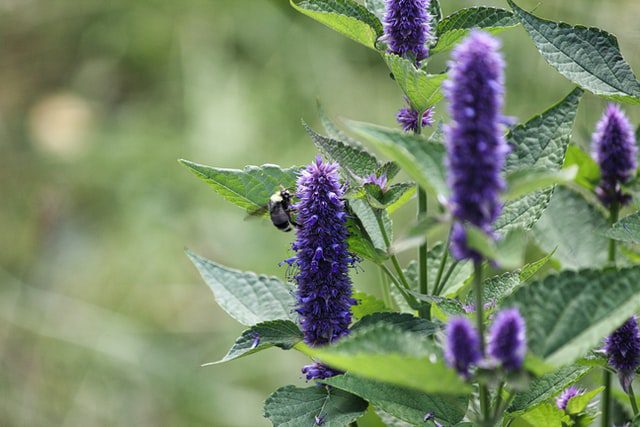
Anise hyssop is an herb that has beautiful purple flowers. This herb is often used in landscaping, as it is very drought tolerant. It can also be used in cooking, as it has a mild flavor. It is great for helping get over colds as well.
This herb is very easy to care for. It’s in the mint family, so it grows in similar conditions to lavender or mint. It prefers full sun but can also tolerate partial shade. This is also a great plant to bring bees into your garden. This plant may wilt when you plant it, but it will be fine after it gets used to the new surroundings.
Echinacea (Coneflower)
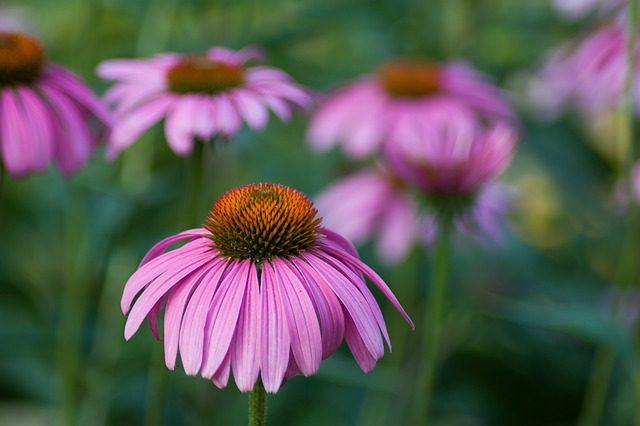
Purple coneflowers are a great addition to any garden, not just because of their color but also their usefulness. Echinacea is used to make teas that can help fight off colds and flus. The tea can also be used topically on wounds and cuts.
This flower is very easy to take care of, it can grow in a wide range of soil types as long as it is well drained. It also doesn’t require much watering, once established they are quite drought resistant. They will flower better if given a little bit of fertilizer during the spring.
Saffron (Autumn Crocus)
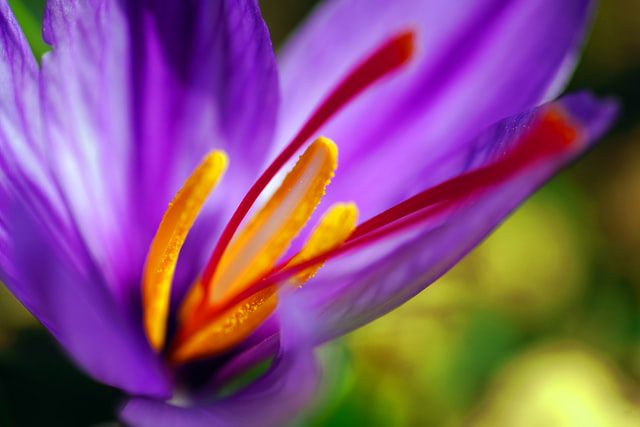
Why wouldn’t you want to grow one of the most expensive herbs available in your garden? This gives great flavor without having to spend an arm and leg to use it.
Make sure to get the correct plant, as some that look similar can be poisonous. The plant likes full sun and well-drained soil similar to most herbs. Water when the topsoil is dry, about once a week should do it. Fertilize in early spring.
Crocus sativus is the fall flowering crocus that produces the saffron threads. Each flower only has three stigmas, making is a very labor intensive crop. However, you only need a few threads to flavor a dish so a little goes a long way.
Purple Basil

While this plant doesn’t have purple flowers, it is a purple herb. These beautiful purple leaves are great in fresh salads or anywhere you want almost a clove-like, spicy flavor.
As with most herbs, purple basil prefers full sun but can tolerate partial shade. The soil should be well-drained and you should water the plant regularly. Fertilize purple basil every few weeks during the growing season. You can harvest the leaves at any time.
I hope you enjoyed learning about these 11 purple herb flowers. Be sure to try growing some in your own garden! Looking for other purple plants but not necessarily herbs? Find these beautiful purple indoor plants.

